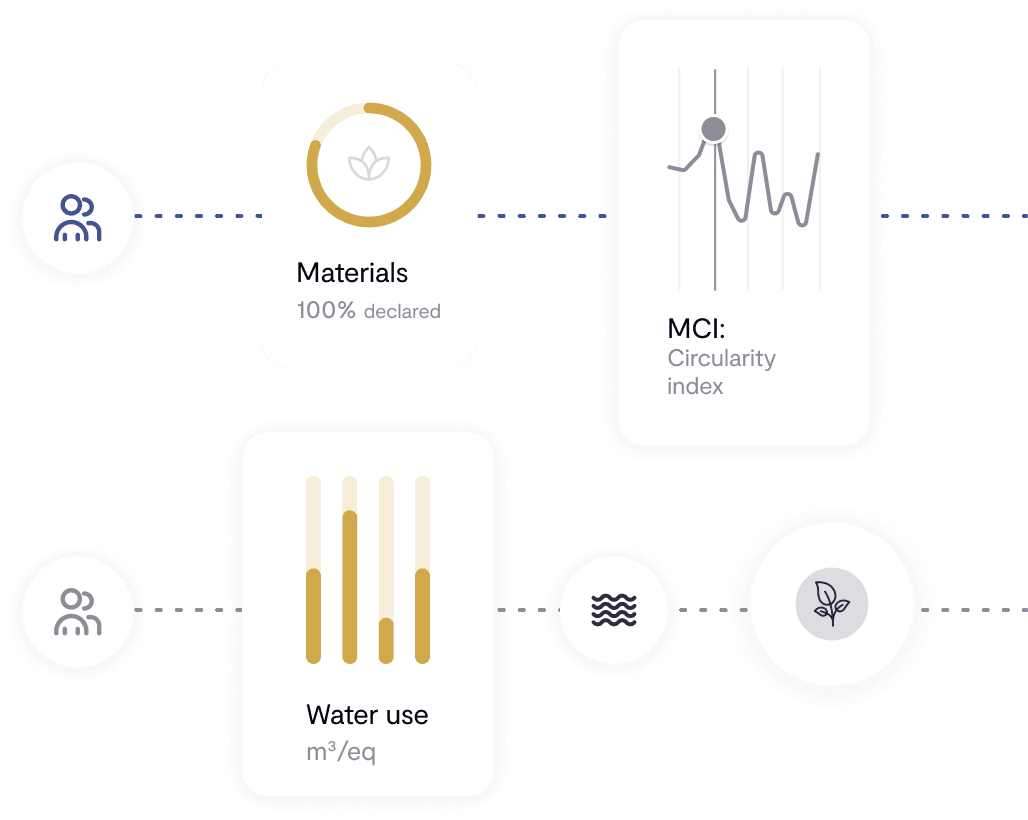The need for a revolution in the fashion industry forces us to look to the future and to rely on technology as the best ally to guarantee the survival of the sector. Although the nostalgic believe that any past time was better, the reality is that innovations in textiles are increasingly widespread among designers, suppliers and manufacturers. But how do you identify what are the advances that will help your business to progress? Used correctly, innovation leads to continuous improvements, not only for the consumer, but also for anyone involved in the textile sector. Discover how available technology can transform the fashion industry from multiple perspectives.
Innovation leads to continuous improvements, not only for the consumer, but also for anyone involved in the textile sector
We could read about it in the latest The State of Fashion Technology Report by BoF. The pandemic has cemented the role that innovation plays in the industry. Despite the fact that until now technological advances were more oriented towards the end customer, brands in the textile sector have the opportunity to strengthen their supply chain, avoid obstacles, as well as enhance their transparency.
Technology applied to processes: innovation at the service of efficiency
Traceability driven by tracking software has been pointed out as one of the great technological opportunities in which fashion professionals must focus their investment. Having a greater knowledge of supply chains to understand the impact of the life cycle of textile products is key to making decisions aimed at improving the efficiency of your business as well as its responsibility.
Any fashion brand that wants to achieve its sustainability goals will need to have a comprehensive view of how its products are made. Full traceability means that companies identify the history, location and distribution of garments at all stages of the supply chain. Due to the complex and fragmented nature of the value chain, technology becomes the key factor in achieving traceability in the fashion industry.
Having digital solutions, such as the one offered by BCome, helps put an end to the manual traceability processes applied in the sector until now. Having rigorous data obtained from trusted datasets allows brands to collect and distribute this data efficiently, as well as guarantee its reliability.
Streamlining the knowledge of your value chain will allow you to more easily identify which are the critical points on which you must act as a priority.
For Axel Arigato, traceability is at the core of its sustainable development. The technology offered by BCome has provided them with extensive knowledge of their supply chain, allowing them to identify which solutions or providers are most appropriate to achieve their goals.
Technology applied to materials: smart fabrics
We recently pointed out some of the innovations in materials that have emerged as a result of technological advances in recycling. Natural fibers of similar quality to virgin materials or systems that allow the production of raw materials suitable for continuous recycling are some of the news that technology has brought to the fabric market.
However, research and the constant search for alternatives that involve less consumption of resources as well as a reduction in impacts have resulted in the design of new materials.
The so-called smart fabrics are those that have features that go beyond maintaining body heat and protecting our skin. Stain-resistant fabrics or fabrics that prevent wrinkles are possible thanks to nanotechnology. This is the case of the materials used by Sepiia, a fashion brand that relies on innovation to get closer to sustainability. This is how the properties of some of its products make it possible to create garments that are more respectful with the planet:
- Stain-resistant. This finish gives the fabric resistance to water penetration and aqueous stains such as those caused by wine, coffee or juices, thus reducing the need to wash the garment. By reducing the number of washes, it’s possible to stop the damage of the fabric, increasing its useful life.
- Anti-wrinkle. This quality is obtained thanks to the composition and elaboration of the fabrics, providing greater resistance to wrinkles. It allows minimizing ironing, thus avoiding the wear of garments while favoring electricity savings and the reduction of CO2 emissions.
- Antibacterial. This property inhibits the growth of odor-causing bacteria. It’s usually used in garments that have greater friction with the skin and are therefore more likely to come into contact with sweat. In this way, it’s possible to extend the time between washes and optimize the resources involved in the care of the clothes.
Nanotechnology offers a new approach in the creation of materials, but the projection in textile innovation doesn’t end here. From biomaterials used in wound healing to thermochromic dyes that allow the color of garments to be modified based on temperature, technology applied to fabrics is a fast expanding market that can create differential value for your brand.
Technology applied to the consumer: enriching experiences
Beyond the creation of new materials and the streamlining of processes, the technology applied to the fashion industry can also improve the final consumer’s experience with the product.
Digital channels offer brands creative ways to engage with customers. We can find a good example of this in the brave brands that choose to integrate their sustainability data in each of the products of their e-commerce. As well as, in those brands that label their physical garments with our smart labels. A tool through which the final consumer can freely navigate through the impacts of the product to ease conscious decision-making.
With the growing popularity of greenwashing in fashion, smart labels have become essential to beat disinformation in the textile sector.
Stores are also an ideal setting to implement technological advances that enrich the brand experience. With the growth of e-commerce after the pandemic, establishments must offer an interaction with the product that the consumer cannot find outside the store.
This is the case of Cos and the next technological solutions that the brand will put into practice in its US stores. Through the introduction of smart mirrors, visitors will be able to virtually try on clothes or find customized style recommendations, as well as more efficient payment and return systems.
Every day there are more brands that decide to make technological adjustments from a competitive perspective. Given the variety of scenarios in which innovation can drive the activity of the textile sector, brands that want to progress in the fashion industry must rely on technology to achieve their expansion, establish stronger relationships with the client and make decisions based on knowledge.
At BCome we have developed the solutions that your business needs to achieve its sustainable transformation. Do you want to know what they are? We invite you to discover our technology!






